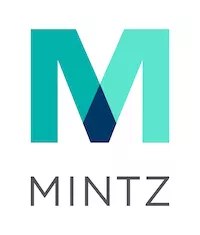- within Food, Drugs, Healthcare and Life Sciences topic(s)
- in United States
- with readers working within the Healthcare industries
- within Law Practice Management and Coronavirus (COVID-19) topic(s)
This article is part of the Mintz IRA Update – Fifth Edition. Explore the full series of IRA-related insights here.
I. States and Manufacturers Continue to Battle over 340B Contract Pharmacies
Over the last two and a half years, the management of the 340B program has increasingly come under legislative and regulatory scrutiny as hospitals and manufacturers dispute the role of contract pharmacies. As we've previously written, the 340B Drug Pricing Program allows 340B entities to purchase outpatient drugs at discounted prices from manufacturers. 340B hospitals often contract with outside retail pharmacies (or "contract pharmacies") to dispense 340B drugs to "patients." Manufacturers have argued that contract pharmacies increase the likelihood that manufacturers would pay duplicate discounts, which occurs when a manufacturer offers both a discounted 340B price and a Medicaid drug rebate for the same drug.
Federal law prohibits duplicate discounts; however, manufacturers have historically struggled to identify them, an issue that has only grown since the Affordable Care Act extended Medicaid drug rebates to Medicaid managed care. As a result, in 2020 and 2021, several manufacturers instituted policies to restrict the ability of contract pharmacies to obtain drugs at 340B prices, arguing that these restrictions were necessary to avoid paying duplicate discounts. These actions resulted in the Health Resources and Services Administration (HRSA) issuing several violation letters against manufacturers claiming that these contract pharmacy restrictions violate the 340B statute. Several manufacturers subsequently challenged HRSA's authority to issue the violation letters in federal court, notching victories in the Third and DC Circuits. A lawsuit filed by Eli Lilly is awaiting a ruling in the Seventh Circuit.
Prompted by the federal court rulings, states have increasingly stepped in to ensure that 340B entities can continue to utilize contract pharmacies by enacting "pharmacy access" laws, which prohibit drug manufacturers from restricting 340B entities from using contract pharmacies. The first two states to enact such laws were Arkansas in 2021 and Louisiana in 2023, followed by Maryland, Kansas, Minnesota, Mississippi, Missouri, and West Virginia in 2024. In the first half of 2025, Colorado, Idaho, Nebraska, New Mexico, North Dakota, South Dakota, Tennessee, Utah, and Oregon, among others, have also enacted pharmacy access laws. While manufacturers have responded with a flurry of lawsuits and well-funded lobbying campaigns, their success in halting implementation and enforcement has been mixed. For example:
- In 2021, Arkansas's 340B pharmacy access laws were challenged by the Pharmaceutical Research and Manufacturers of America (PhRMA) and the district court ruled in favor of the state. In March 2024, the Eighth Circuit upheld Arkansas's law and subsequently denied PhRMA's request for a rehearing. In December, the Supreme Court refused to hear PhRMA's appeal.
- In June 2024, a federal district court rejected challenges from AstraZeneca and AbbVie against Mississippi's law. This lawsuit has since been appealed to the Fifth Circuit.
- In December 2024, a federal court issued a preliminary injunction in favor of PhRMA and the manufacturer Novartis, prohibiting West Virginia from enforcing its pharmacy access law.
- In December 2024, AbbVie and AstraZeneca also dropped lawsuits challenging Kansas's law after the state attorney general announced that it did not "prohibit or forbid" manufacturer restrictions on contract pharmacies.
- The Michigan legislature adjourned in 2024 before passing a pharmacy access bill that was considered to have strong momentum.
- Manufacturers have filed a flurry of lawsuits in response to
pharmacy access bills enacted in 2025.
- In June 2025, AstraZeneca filed a federal lawsuit against Nebraska Attorney General Michael Hilgers, seeking to block the state's newly enacted contract pharmacy access law.
- In July 2025, PhRMA and AbbVie sued Hawaii over its 340B contract pharmacy access law, with PhRMA additionally filing suits in Vermont and Colorado.
Furthermore, AbbVie and Novartis have challenged several pharmacy access laws, including in Oklahoma, Rhode Island, and Oregon. After AbbVie challenged a Missouri law, a federal judge dismissed the lawsuit, claiming that it lacked standing.
Despite the extensive litigation noted above, the legal battle over these state laws appears to be just beginning. Pharmacy access bills have been introduced in Hawaii, Rhode Island, Connecticut, New York, and Illinois, among other states, and it is likely that states will continue to join this growing list in 2025. States enacting legislation will likely continue to face manufacturer challenges, which will ultimately allow the courts to decide the legality of 340B contract pharmacies going forward.
II. HRSA Launches 340B Rebate Model Pilot Program Amid Ongoing Legal and Regulatory Shifts
On July 31, 2025, the Health Resources and Services Administration (HRSA) released long-awaited guidance establishing a 340B Rebate Model Pilot Program (Pilot Program). The announcement marks a pivotal moment in the evolution of the 340B Drug Pricing Program, capping off months of litigation, regulatory proposals, and shifting agency priorities.
The Pilot Program offers a structured pathway for manufacturers to provide post-sale rebates to covered entities in lieu of the traditional upfront 340B discounts. In introducing the Pilot Program, HRSA announced that "[the] Pilot Program addresses concerns we have received from both covered entities and manufacturers, while creating a measured approach to the process of approving manufacturer rebate models under the 340B Program."
Program Overview
The Pilot Program is voluntary and limited to drugs selected for negotiation under the Medicare Drug Price Negotiation Program (Negotiation Program). Manufacturers with Negotiation Program agreements for the 2026 Applicability Year must submit plans to HRSA by September 15, 2025. If approved, those plans will take effect on January 1, 2026. HRSA has emphasized that manufacturers may not implement rebate models without prior agency approval, a position recently upheld by multiple federal courts, as described below.
The rebate model represents a significant departure from the traditional 340B replenishment model. Under the Pilot Program, participating manufacturers will offer post-purchase rebates to covered entities rather than upfront discounts. Covered entities will pay the wholesale acquisition cost (WAC) for selected drugs and later receive a rebate equal to the difference between the WAC and the 340B ceiling price. Covered entities may submit claims data up to 45 calendar days from the date of dispense. Rebates must be paid within 10 calendar days of data submission. HRSA's guidance outlines detailed criteria for participation, including data security requirements, reporting timelines, and assurances that no administrative costs will be passed on to covered entities. Lastly, in the announcement, HRSA explains that rebates cannot be denied based on concerns about diversion or Medicaid duplicate discounts unless properly documented. HRSA adds that disputes must be handled through HRSA's existing audit and ADR mechanisms.
Litigation Landscape
The Pilot Program arrives on the heels of a series of legal decisions affirming HRSA's authority to require preapproval of rebate models. In June 2025, a federal district court in Washington, DC ruled against Johnson & Johnson (J&J), rejecting the company's claim that HRSA lacked statutory authority to block its proposed rebate model. The court found that the 340B statute clearly delegates discretion to the Secretary of Health and Human Services to determine whether and how rebate models may be implemented. The court also upheld HRSA's position that J&J's model could not be implemented without prior approval and that HRSA's reasoning was neither arbitrary nor capricious.
This decision aligns with earlier rulings in related cases brought by Eli Lilly, Bristol Myers Squibb, Sanofi, and Novartis. In each case, federal courts upheld HRSA's authority to require prior approval of rebate models under the 340B statute. Together, these decisions reinforce the federal government's ability to oversee and enforce rebate and discount mechanisms within the 340B program.
Regulatory Developments and Claims-Based Tracking
The rebate model also intersects with broader efforts to prevent duplicate discounts under the Inflation Reduction Act (IRA). The IRA requires manufacturers to charge 340B covered entities the lesser of the 340B price or the Maximum Fair Price. This has prompted the Centers for Medicare & Medicaid Services (CMS) to propose in the CY 2026 Physician Fee Schedule, for the first time, claimsbased methods to identify 340B drugs in Medicare Part D.
CMS's proposal includes two key mechanisms: voluntary reporting of five data elements per claim, and cross-referencing prescriber and pharmacy NPIs with known 340B relationships. The use of claim-level modifiers to identify 340B utilization is a notable development, as it lays the groundwork for more precise tracking and enforcement under both the 340B and Negotiation Program frameworks.
Stakeholder Reactions and Future Outlook
Initial reactions from covered entities have been cautious. The American Hospital Association (AHA) expressed concern that HRSA's guidance "authorizes a significant departure from how the 340B program has successfully operated for decades and sets a dangerous precedent for possible harmful expansions in the future." The AHA characterized the pilot as a response to a "nonexistent program integrity problem" and warned that any delays or cost-shifting could pose serious financial risks to hospitals and the communities they serve. At the same time, the AHA acknowledged HRSA's efforts to impose strict guardrails and emphasized the importance of ensuring that manufacturers bear all implementation costs and provide rebates expeditiously.
As the 340B program continues to evolve, the rebate model introduced in the Pilot Program may serve as a bellwether for future reforms. With no clear legislative path forward in Congress and the Trump administration proposing to shift 340B oversight from HRSA to CMS, the Pilot Program offers a glimpse into how federal agencies may reshape the program through administrative action.
III. CMS Proposes Steeper OPPS Clawbacks, Launches Drug Cost Survey with Public Comment
In July 2025, CMS issued its 2026 Hospital Outpatient Prospective Payment System (OPPS) proposed rule, which includes two significant 340B policies. First, it includes cuts in the OPPS rates paid to hospitals to accelerate the reduction to the OPPS conversion factor for non-drug services to account for the "overpayment" made to hospitals from 2018 – 2022 as a result of the first Trump administration's reduction in payment for outpatient 340B drugs during that time. The proposed rule also notified hospitals that CMS plans to conduct a hospital drug acquisition cost survey. The two proposals stem from the same complicated fight between the government and 340B hospitals over reimbursement.
OPPS Payment Cuts
Most drugs under the OPPS are bundled or packaged into the Ambulatory Payment Classifications (APCs) that are established for a procedure. Broadly, APCs are payment rates CMS establishes for outpatient procedures that are meant to capture the cost it would take to provide those services. However, new and/or high-cost drugs are not bunded into the standard APC payment rates that providers receive. These nonbundled drugs, referred to as "separately payable drugs," have accounted for more than a quarter of all spending under the OPPS in recent years.
Prior to 2018, the Medicare OPPS reimbursed hospitals at 106% of average sales price (ASP) for separately payable drugs. CMS calculates and publishes an ASP — which is the average amount that drug manufacturers receive for a drug product after accounting for all discounts and rebates — pricing file quarterly based on sales and discount data submitted by manufacturers.
In 2018, under the first Trump administration, CMS reduced the OPPS rate paid to 340B hospitals for separately payable drugs by nearly 30% (from 106% of ASP down to ASP minus 22.5%), reasoning that these hospitals (which can acquire drugs at a discounted rate) were receiving a windfall from Medicare. Non-340B hospitals continued to receive the 106% of ASP rate for separately payable drugs. However, the Medicare statute imposes a budget neutrality requirement, meaning any change in payment policies must not increase or decrease Medicare spending by more than a set threshold. As such, the 2018 payment reduction to 340B hospitals for separately payable drugs was offset by an increase in OPPS reimbursement rates for non-drug items and services for all hospitals.
The American Hospital Association (AHA) challenged the 340B payment cuts shortly after they were finalized in 2017. In 2022, the Supreme Court in American Hospital Association et al. v. Becerra et al. ruled that the payment reduction was unlawful and remanded the case. On remand, the district court, rather than formally vacating the OPPS ruling, instructed HHS to remediate the underpayments made to 340B hospitals between 2018 – 2022.
Following the Supreme Court's ruling, the agency issued a one-time $9 billion payment to approximately 1,600 affected providers and restored 340B reimbursement to 106% of ASP beginning in 2023. As noted, CMS had increased payments for non-drug items and services by $7.8 billion during that same period. To ensure budget neutrality, CMS announced that it would impose a 0.5% annual reduction to the OPPS conversion factor for non-drug services starting in 2025 and ending in 2041 to, in effect, claw back the overpayments made from 2018 – 2022.
As part of the CY 2026 OPPS proposed rule, CMS is seeking to accelerate this clawback / annual payment reduction from 16 to 6 years by increasing the annual conversion factor reduction from 0.5% to 2%. Hospitals paid under the OPPS, including many 340B hospitals, have raised concerns about the financial strain of this acceleration and frontloading of the payments.
Drug Acquisition Cost Survey
Simultaneously, CMS announced that it was conducting a survey on drug acquisition costs and soliciting public comment. The Supreme Court's ruling in the Becerra case that the 340B payment cuts were invalid was based in part on the fact that the agency did not conduct a proper survey to justify imposing disparate reimbursement on 340B versus non-340B hospitals. Therefore, the survey appears to be laying the groundwork for reimposing reduced OPPS payment to 340B hospitals in the future, although the fact that CMS is soliciting comments on whether participation in the survey should be mandatory for all OPPS hospitals indicates the Trump administration is considering broader payment cuts in Medicare. The survey is expected to run from late 2025 through early 2026 and will inform the 2027 OPPS rulemaking cycle.
Hospitals and stakeholders should closely monitor the evolving regulatory landscape, particularly the implications of the proposed clawback acceleration and the potential for future rate setting based on newly collected acquisition cost data.
IV. Senate HELP Committee's Long-Awaited 340B Report Highlights Ongoing Problems but Provides Few Solutions
On April 24, 2025, the Senate Health, Education, Labor & Pensions (HELP) Committee, led by Sen. Bill Cassidy (R-La.), released a report on its investigation into the 340B program. The investigation, which began in 2023, sought information from a group of eight 340B program participants — comprising two covered entities, contract pharmacies, third-party administrations (TPAs), and drug manufacturers — in order "to gain a comprehensive understanding of where the dollars generated by ... the program flow and how such revenue benefits patients."
Despite only targeting eight participants, the HELP Committee gathered substantial information on 340B program operations through participant responses to narrative questions and other disclosed information, including PBM agreements, network pharmacy participation agreements, and 340B drug spending data. Much of this material is included in the Report's Appendix. Although the Report did not propose any specific legislative language, it includes a number of recommendations for Congress, including:
- Requiring covered entities to provide detailed annual reporting on how 340B revenue is used to ensure direct savings for patients, providing a more transparent link between program savings and patient benefit.
- Addressing potential logistical challenges caused by increased administrative complexity, leading to burdens that may impede patient benefit from the program.
- Investigating the types of financial benefits contract pharmacies and TPAs receive for administering the 340B program to ensure that increasing fees do not disadvantage covered entities and patients.
- Requiring transparency and data reporting for entities supporting participants in the 340B program (i.e., contract pharmacies and TPAs).
- Providing clear guidelines to ensure that manufacturer discounts actually benefit 340Beligible patients, including examining legislative changes to the definition of "eligible patient" and contract pharmacies' use of the inventory replenishment model.
Given the lack of proposed federal 340B program legislation, and no mention of the program in President Trump's FY 2026 Budget Proposal, it is unclear what shape potential federal 340B program reform will take. As a result, all eyes appear to be shifting back to HHS and HRSA as we await further implementation of the 340B rebate model.
The content of this article is intended to provide a general guide to the subject matter. Specialist advice should be sought about your specific circumstances.





